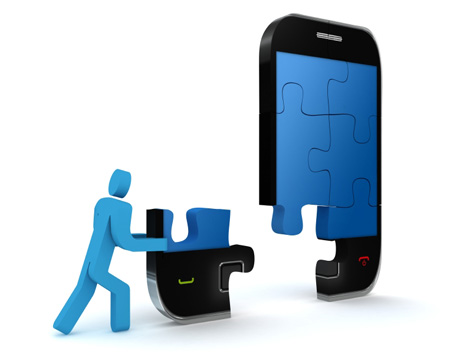Times have really changed for mobile gaming. My first recollection of a handheld game is a football game from Mattel from the late 1970s. This was about 10 years before Nintendo came out with the original Game Boy, soon followed by Atari’s Lynx if you wanted color. Nowadays, everyone has their own multi-player mobile gaming platform in their pocket in the form of a smartphone. You can forget about packing extra AA batteries. Just pay 99 cents for the latest mobile game to be downloaded over the air.
Nintendo Does Game Boy
Just think how many AA batteries were abused in that original Game Boy. It wasn’t in fact the first handheld gaming device from Nintendo (or anyone). That came nearly 10 years earlier from Nintendo in their Game & Watch (G&W) system. Where the G&W offered single game handhelds, the Game Boy added Tetris or more specifically cartridges. You were no longer limited to one game per device. Also, it even had a multi-player mode in the form of a link cable. Just make sure you stand close enough to your friend and carry lots of cartridges around.
Atari’s Second Handheld, Lynx, Does Color
The Nintendo Game Boy was an unstoppable success in the fall of 1989, but it left you with a monochromatic display for your games. Again taking 6 AA batteries, the Lynx was Atari’s response. No more Atari thumb, you now had a big and bulky handheld gaming system but at least it did color. Unfortunately, early distribution problems pretty much killed the system, as by the time Atari recovered from their supply problems, the “inferior” Game Boy had taken over the hand-held market and would hold on for years to come. The Lynx did expand expectations for hand held gaming consoles though. Instead of just two people playing simultaneously, Lynx allowed 18, if the game supported it. Most were limited to less than 10 though. And, you got backlighting, too, so you could see the screen just a little better.
Fast Forward to Smartphone Games
Mobile gaming is light years away from all that now. The screens on today’s smartphones are no comparison to the original Game Boy. Hell, they aren’t any comparison to the newest Nintendo 3DS. The specs of something like the newest iPhone 4S have a few more than two colors and resolution of 640×960. And no longer do you have to carry around cartridges, CD or even SD/CF cards to play different games. Just download from your favorite app store over WiFi or the phone’s network, and you have no practical limit to the number of games available. You can even forget about hunting around at Christmas for something like Pokémon Yellow. App stores have unlimited supplies. And don’t forget about those accelerometers. No longer must you bang on keys. Just tilt and turn the phones for your in-game character to act out.
What more do today’s mobile games offer? Networking, networking, networking. Even “simple” single player games add networking for high score sharing if nothing else. More typically though, today’s games offer a social aspect where you trade gifts and help out new friends to complete shared tasks or just battle it out head-to-head in real time from halfway around the world.
It used to be that only major developers could afford the equipment required to create a game for handheld systems, like the Game Boy. There wasn’t really any hope for small-time developers to make it big by crafting the break-out game of the year. All that has changed now, though, since developers can now download the latest development kit for their chosen platform and go to town. This has improved things just as much for developers as for consumers.
Now Where for Mobile Games?
What’s next in the world of mobile games? Ninety-nine cent games are actually going away. Instead, game developers make their money through in-game purchases. If they need a quick revenue boost, all the developer has to do is add a simple graphic, call it a limited time only release, and they make thousands through volume, a few cents at a time. It has come a long way from monochrome games found on cartridges, or just dedicated hardware for each game. When something like Angry Birds has over a billion downloads those few cents really add up. Now, just sit back and watch those birds fly. No AA batteries required, just a charger.
